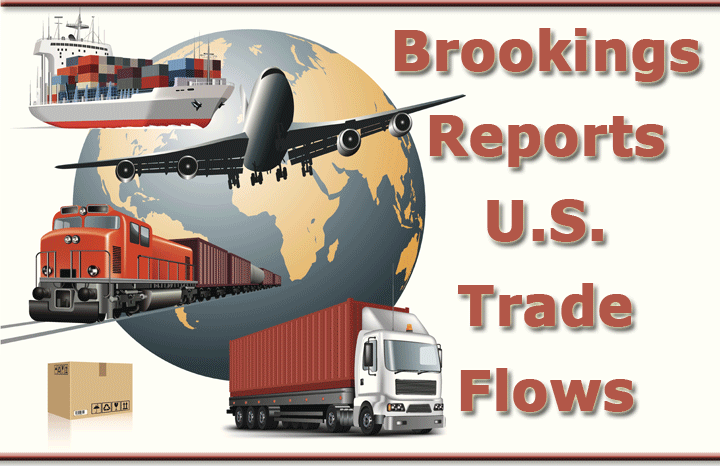
Next week the Washington-based
Brookings Institute’s Metropolitan Policy Program will release twin
reports as part of its Metro Freight Series examining the volume of goods
flowing through U.S. ports and across the nation by truck, train, boat,
plane, and pipeline.
For nearly 100 years the Brookings Institution
has been a private, nonprofit organization devoted to independent research
and innovative policy solutions.
These new reports examine where traded goods
start, flow, and go in the U.S. by exploring how metropolitan areas drive
the flow of goods domestically and internationally, revealing, among other
things, Brookings said, “significant implications for national,
regional, and local infrastructure policy.”
The first report titled “The Great
Port Mismatch: U.S. Goods Trade and International Transportation”
focuses on the role air, land, and sea ports play on the movement of goods
at a regional level and the spatial mismatch between a port’s jurisdictional
home and its economic importance to the country as a whole, making the
point that only about 4 percent of goods moving through ports start or
end in the port’s local market.
Other findings include:
•
Ports primarily serve customers in other parts of
the U.S.
•
The largest 25 port complexes in the U.S. move 85
percent of all internationally traded goods.
•
Average international goods travel over 1,000 miles
within the U.S. to get from port to market, underscoring how international
trade relies on the domestic freight network.
Report Number Two from Brookings, titled
“Metro Modes: Charting a Path for the U.S. Freight Transportation
Network,” examines the movement of goods via trucks, railroads,
airports, waterways, and pipelines between different regions nationally,
revealing the need for more targeted freight investments. Findings include
things many in air cargo already know, but since these reports are aimed
at federal, state, and local leaders and businesses tasked to support
more efficient goods movement, the impact on improving infrastructure
could benefit everybody in the supply chain.
Findings in “Metro Modes” include:
•
Trucks dominate domestic goods trade, carrying up
to 75 percent of the value and weight of commodities.
•
Air modes tend to move high-value commodities like
precision instruments, and railroads and pipelines specialize in raw materials
like energy.
•
Between neighboring metro areas like Dallas/Houston
and Washington/Baltimore, trucks can account for 90 percent or more of
freight activity, and this mode heavily influences their own and national
infrastructure needs.
“As congestion costs rise and budgets
for infrastructure investments shrink, these reports shed light on priority
infrastructure assets and corridors,” Brookings said.
More: http://www.brookings.edu/projects/global-cities.aspx
or www.jpmorganchase.com/globalcities.
Geoffrey |





